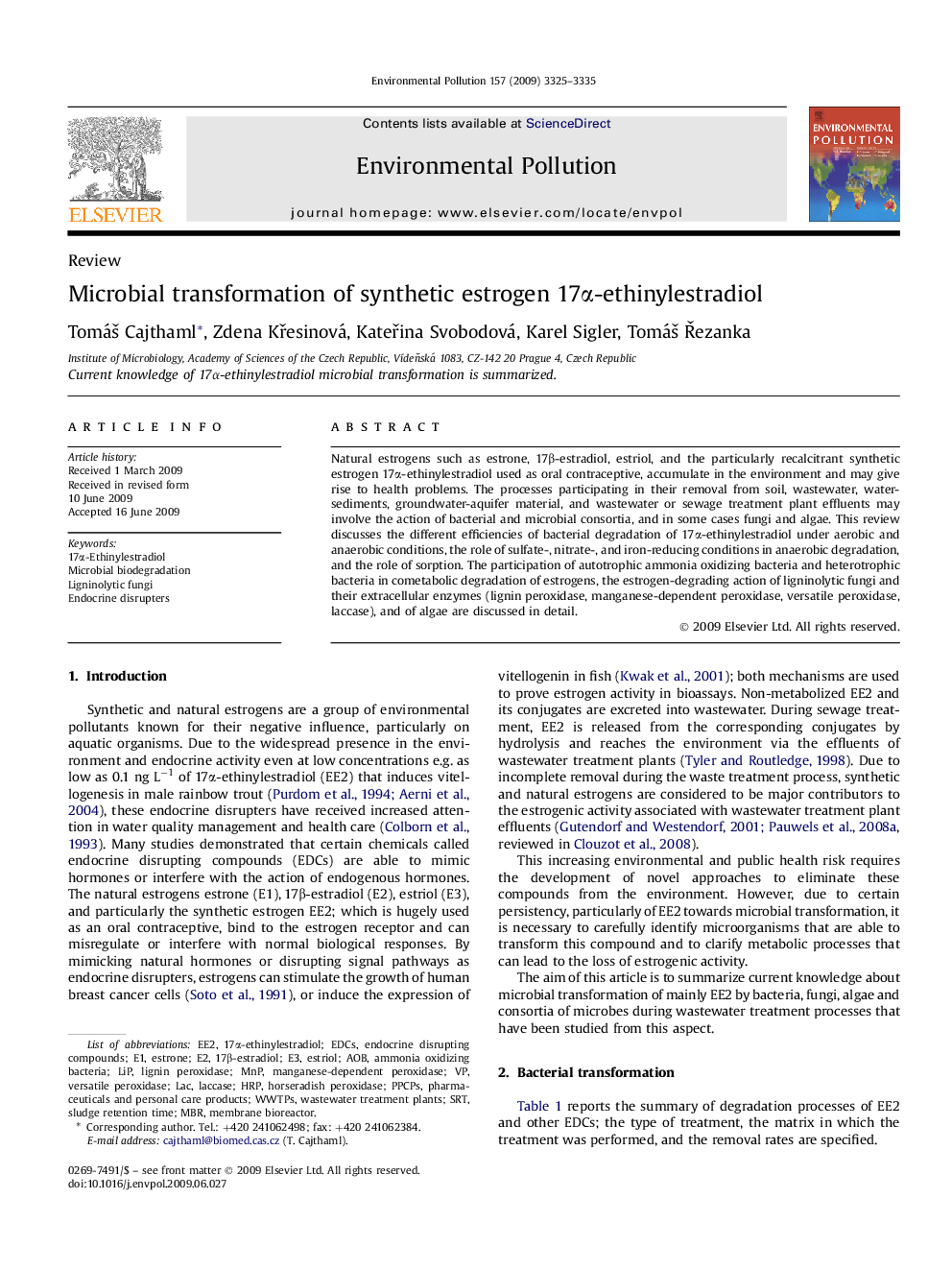| Article ID | Journal | Published Year | Pages | File Type |
|---|---|---|---|---|
| 4426021 | Environmental Pollution | 2009 | 11 Pages |
Natural estrogens such as estrone, 17β-estradiol, estriol, and the particularly recalcitrant synthetic estrogen 17α-ethinylestradiol used as oral contraceptive, accumulate in the environment and may give rise to health problems. The processes participating in their removal from soil, wastewater, water-sediments, groundwater-aquifer material, and wastewater or sewage treatment plant effluents may involve the action of bacterial and microbial consortia, and in some cases fungi and algae. This review discusses the different efficiencies of bacterial degradation of 17α-ethinylestradiol under aerobic and anaerobic conditions, the role of sulfate-, nitrate-, and iron-reducing conditions in anaerobic degradation, and the role of sorption. The participation of autotrophic ammonia oxidizing bacteria and heterotrophic bacteria in cometabolic degradation of estrogens, the estrogen-degrading action of ligninolytic fungi and their extracellular enzymes (lignin peroxidase, manganese-dependent peroxidase, versatile peroxidase, laccase), and of algae are discussed in detail.
